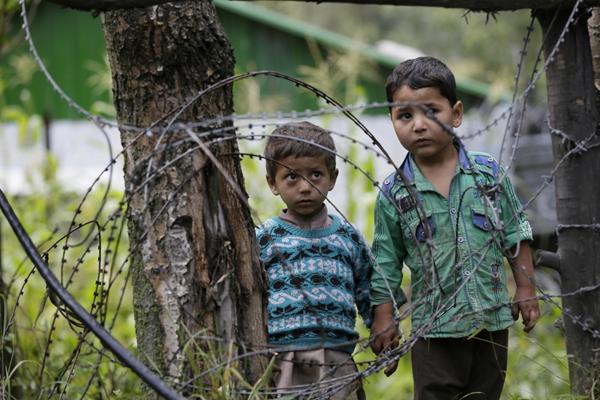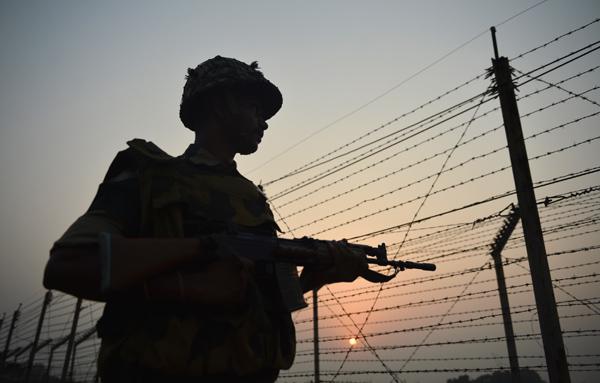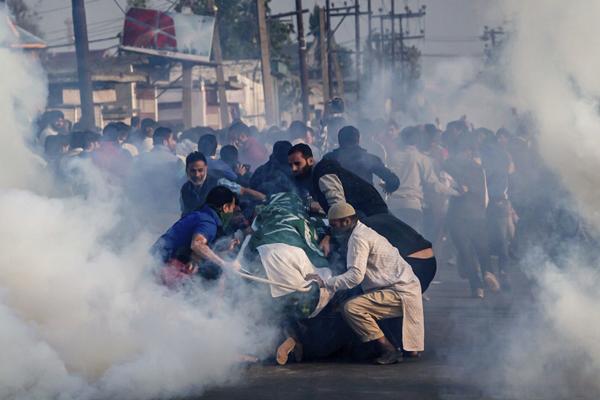You are here
Guns fall silent, but tensions high between India, Pakistan
By AP - Nov 28,2016 - Last updated at Nov 28,2016
NEW DELHI — An uneasy calm has fallen over the de facto border between the Indian and Pakistani-controlled portions of Kashmir after months of deadly firing and signs that the two countries were engaged in a brinkmanship not seen for decades.
Though guns have gone silent for the past five days, analysts say the two nuclear-armed neighbours have displayed unprecedented aggression this year without pursuing any real lines of diplomacy. They’ve amped up the artillery they’ve used and targeted infrastructure instead of just military outposts. The corpses of soldiers killed in battle have been found mutilated.
“The level of retaliation was definitely more intense than what India has done in the past,” said defence analyst C. Uday Bhaskar of the New Delhi-based think tank Society for Policy Studies.
“There is a danger of it spiraling out of control,” Bhaskar said. “If both sides decide that neither side will blink, then the collateral damage will only increase.”
That could also mean recalling diplomats, halting the buses ferrying people back and forth across the border, or stopping all trade. In 2015, bilateral trade amounted to just $2.6 billion — far below the $10.9 billion Indian government economists say is possible under normal relations.
India and Pakistan have long been foes, fighting two of their three wars over their rival claims to the Himalayan region of Kashmir. Countless rounds of peace talks have yielded scant results.
The two sides reached a ceasefire agreement in 2003 which held for the first few years, but has seen frequent violations since then. Meanwhile, India accuses Pakistan of arming and training Kashmiri rebels fighting to oust India from the Muslim-majority region. Pakistan denies the allegation, saying it offers the rebels only moral support, and accuses India of an illegal military occupation of the disputed mountain territory.
Tensions began building this year as Kashmiri civilians on the Indian-controlled side rose up in rebellion, demanding independence or a merger with Pakistan. Violent street protests and clashes with Indian forces left 90 civilians dead and thousands injured.
The situation escalated further in September after anti-India rebels launched an attack on an Indian army base in the western Kashmiri town of Uri, killing 19 soldiers.
Prime Minister Narendra Modi promised “a befitting reply to those who dare to attack India”, and India retaliated by sending small groups of military commandos across the border for what it called “surgical strikes” on terror bases. India said a dozen suspected rebels were slain, which Pakistan denied.
Pakistan’s outgoing military chief, Gen. Raheel Sharif, promised that “India will be taught a lesson.” The two sides then spent two months firing aggressively at each other. As days turned to weeks, villagers were evacuated from areas near the Line of Control, the de facto border that divides Kashmir into the separate territories administered by India and Pakistan.
Pakistan, along with some residents near the border, accused India of using the Uri attack to ramp up border hostilities in order to distract attention from the public protests within Indian-controlled Kashmir.
As the shelling intensified, schools near the frontier were shut down indefinitely. Farmers abandoned their crops to rot. Pakistani cinemas banned Bollywood films, while Indian filmmakers vowed to never hire Pakistani actors.
Last week, the body of one of three Indian soldiers killed by rebels was found mutilated, a month after another Indian soldier was found beheaded.
Indian military officers, speaking on condition of anonymity in line with military rules, acknowledged the tensions have escalated to the highest level since the ceasefire came into effect.
“Our reaction time is swift and severe. It’s no more wait and watch, no more hold your fire to see what the higher bosses have to say,” an army officer in Kashmir said.
Indian officials said Pakistan has violated the ceasefire agreement more than 300 times in the last two months by firing and shelling military positions and villages, killing at least 17 Indian soldiers and 12 civilians in the Indian-controlled portion of Kashmir.
Pakistan has countered with its own list of 44 casualties, including 11 civilians that it said were killed when a civilian bus came under fire.
There were anxious moments last week as Pakistan shelled the border district of Gurez, close to a hydropower project that India is building, forcing authorities to suspend work.
There had been signs when Modi took office in 2014 that he might seek to work with Pakistan towards normalising relations. He invited his Pakistani counterpart, Nawaz Sharif, to his inauguration in New Delhi. A year later when returning to India from a trip abroad, Modi dropped in on Sharif at his home in Lahore to give him greetings on his birthday.
The bonhomie was short lived.
An attack on an Indian air force base in January and the assault on the army base in Uri eight months later left the 2003 ceasefire agreement in tatters.
Meanwhile, both countries face domestic pressure to take a harder line. Modi’s Hindu nationalist party, in campaigning for some state elections, has once again whipped up a jingoistic fervour against Pakistan.
In Pakistan, a new army chief was appointed over the weekend. But analysts in both India and Pakistan said they do not expect any major change in Islamabad’s position, as the army chief would not want to be seen as selling out.
Related Articles
ISLAMABAD — Pakistan's air force closed a major highway on Thursday to let it practice landing jets on the road, in what it said was routine
ISLAMABAD — Pakistani and Indian troops on Monday exchanged fresh fire across their de facto border in Kashmir, Pakistan's military said, fo
SRINAGAR, India — Indian forces fired shotgun pellets and tear gas on Saturday as thousands of people carried the body of a 12-year-old boy



















